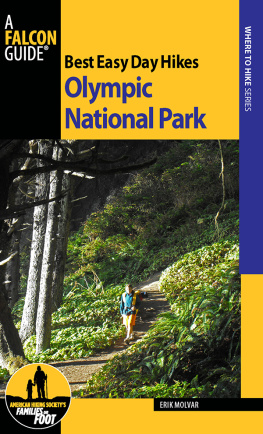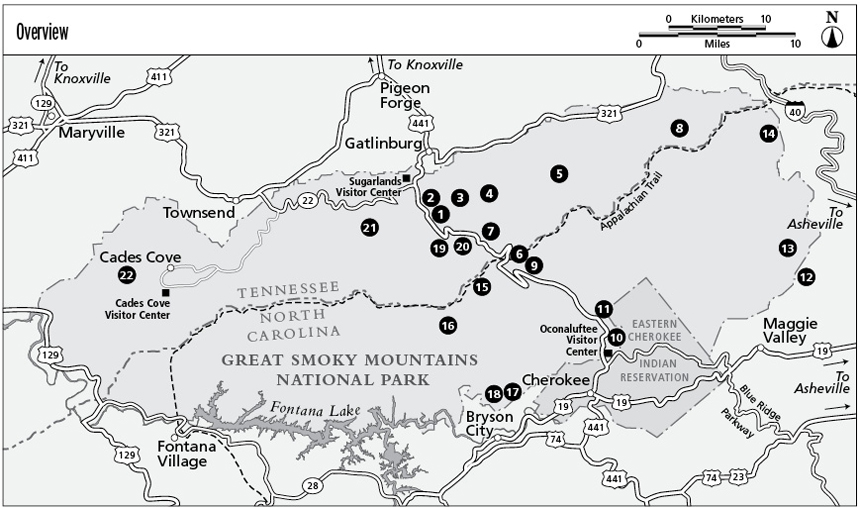Best Easy Day Hikes
Great Smoky Mountains
National Park
Help Us Keep This Guide Up to Date
Every effort has been made by the author and editors to make this guide as accurate and useful as possible. However, many things can change after a guide is publishedtrails are rerouted, regulations change, facilities come under new management, etc.
We would love to hear from you concerning your experiences with this guide and how you feel it could be improved and kept up to date. While we may not be able to respond to all comments and suggestions, well take them to heart and well also make certain to share them with the author. Please send your comments and suggestions to the following address:
Globe Pequot Press
Reader Response/Editorial Department
P.O. Box 480
Guilford, CT 06437
Or you may e-mail us at:
editorial@GlobePequot.com
Thanks for your input, and happy trails!
Best Easy Day Hikes Series
Best Easy Day Hikes Great Smoky Mountains National Park
Randy Johnson
Copyright 2010 by Morris Book Publishing, LLC
ALL RIGHTS RESERVED. No part of this book may be reproduced or transmitted in any form by any means, electronic or mechanical, including photocopying and recording, or by any information storage and retrieval system, except as may be expressly permitted in writing from the publisher. Requests for permission should be addressed to Globe Pequot Press, Attn: Rights and Permissions Department, P.O. Box 480, Guilford, CT 06437.
FalconGuides is an imprint of Globe Pequot Press.
Falcon, FalconGuides, and Outfit Your Mind are registered trademarks of Morris Book Publishing, LLC.
Project editor: Gregory Hyman
Layout: Kevin Mak
Maps: Hartdale Maps Morris Book Publishing, LLC
TOPO! Explorer software and SuperQuad source maps courtesy of National Geographic Maps. For information about TOPO! Explorer, TOPO!, and Nat Geo Maps products, go to www.topo.com or www.natgeomaps.com.
Library of Congress Cataloging-in-Publication Data is available on file.
ISBN 978-1-4930-0285-6
The author and Globe Pequot Press assume no liability for accidents happening to, or injuries sustained by, readers who engage in the activities described in this book.
Contents
Introduction
Great Smoky Mountains is the countrys most popular national park. That distinction is due to much more than just proximity to nearby urban areas. This United Nationsdesignated International Biosphere Reserveone of the most diverse ecosystems on Earthis a temperate rainforest thats world-class lush. Despite extensive logging in the early 1900s, 35 percent of the park was never logged, so large tracts of towering virgin timber remain. The 800 square miles of the Smokies is one of the largest intact natural areas in the eastern United States. For the serious explorer, the Smokies contain entire watersheds of peaks and valleys completely devoid of trails. Though motorists rarely see it, hikers can delve into that inspiring wilderness on even short walks.
Ecosystems and Weather
A huge area of the park soars above 4,500 feet to more than 6,600 feet, where cool summers and deep-snow winters prevail in the spruce-fir ecosystem of the Canadian forest zone (comprised of red spruce and Fraser fir). Vast portions of the park also sprawl below 2,500 feet, where a diverse pine and oak forest reigns and summer can bring sticky, even hot weather. Between these two ecosystems, elevation and aspect (the location of the land in damp valley or on dry ridge, on the sunny side or in the shade) yield woodlands of three general types. Luxuriant hemlock forests, now being decimated by the hemlock woolly adelgid (an Asian import), grow from 3,000 to 4,000 feet. Hardwoods grow from 4,000 feet to the summit spruce-fir zone. The damp, deep-soil valleys of the cove hardwood forests contain the parks tallest trees, often yellow poplar. Higher, above 4,500 feet, northern hardwoods of beech and birch intersperse among evergreens.
The Smokies location and range of elevation bestows a uniquely northern climate. The best wildflower walks are invariably during April (with May a close second), as warm weather returnsespecially lower in the park. Higher up, spring often hasnt sprung till very late May or early June. June, July, and August bring the warmest weather, but late August starts the temperature dip to autumn at lofty locations. By late September, autumn color is evident, and its everywhere by mid- to late October.
Spring and summer are the Smokies rainy season. There are beautiful days, but be prepared for misty rain, thunderstorms, and yes, even torrential downpours. Rainfall ranges between 55 and 85 inches annually, from low to high elevationso rain gear should be in everyones day pack. Fall generally dries out nicelyand quickly leads to winter.
The Top of Old Smoky is one long very high ridge that often influences the weather. From late October, and especially November through March and even into April, snow can be light and atmospheric (early and late) or drifted to awe-inspiring depths that close the Newfound Gap Road between Cherokee, North Carolina, and Gatlinburg, Tennessee. Spring and fall hikers should be prepared: Bring a hat, light gloves, and warm fleece garments to layer under waterproof outerwear should the wind whip and the temps dip. Winter hikers bound for the highest summits would do well to know the weather in advance and bring sophisticated winter gear and the expert knowledge of how to use it.
History
The Smokies are the perfect place to take a history hike. Evidence of times past is everywhereespecially along trails from late fall to spring, when retreating vegetation reveals walls, steps, foundations, and decaying structures.
Native American lore and legend wraps like the mists around these mountains, the once-idyllic realm of the Cherokee. Ironically, six years before Andrew Jackson banished the Smokies Cherokees to their tragic Trail of Tears, a forced removal to Oklahoma in 1838, Hudson River School-era portrait artist George Catlin had proposed the concept of a Nations park to protect Indian civilization, wildlife, and wilderness from destruction. Catlins 1832 Indian portraits are among the classic images of the Old West. The proud Cherokee past stands out at various attractions just outside the park in the Cherokee Indians Qualla Boundary reservation. The Oconaluftee River Trail near Cherokee is an introduction.
The arrival of later settlers is reflected in dozens of places, at sites where interpretive programs describe the lives of those whose early cabins, farms, mills, and later, clapboard churches and houses, still remain. In further irony, those residents were also evicted from the Smokiesbut compensated for their propertywhen the National Park Service broadened the nations environmental and recreational assets by creating parks in the East. In Virginias Shenandoah National Park, then the Great Smokies in North Carolina and Tennessee, and again along the Blue Ridge Parkway in North Carolina and Virginia, the federal government removed residents from private land. Earlier parks in the West were created on public land to begin with.













